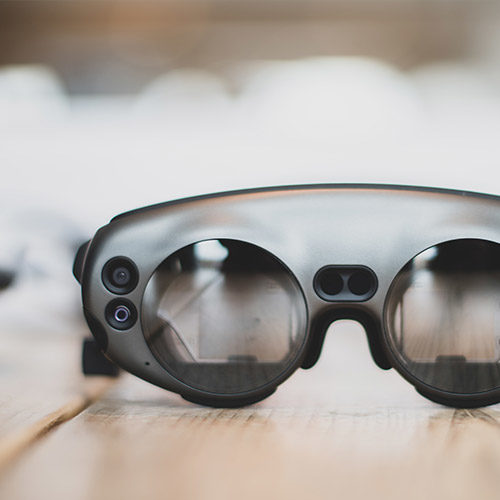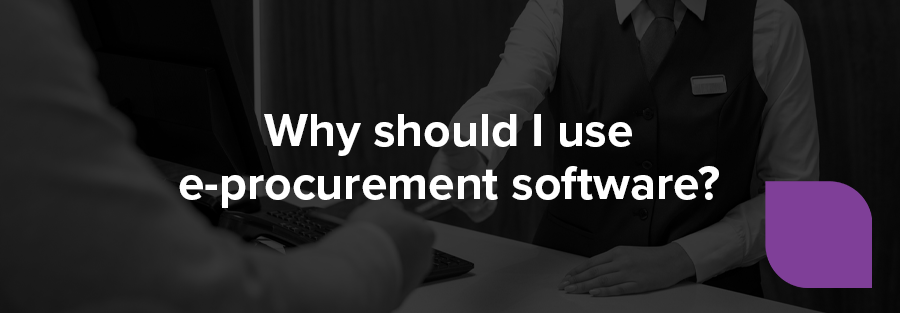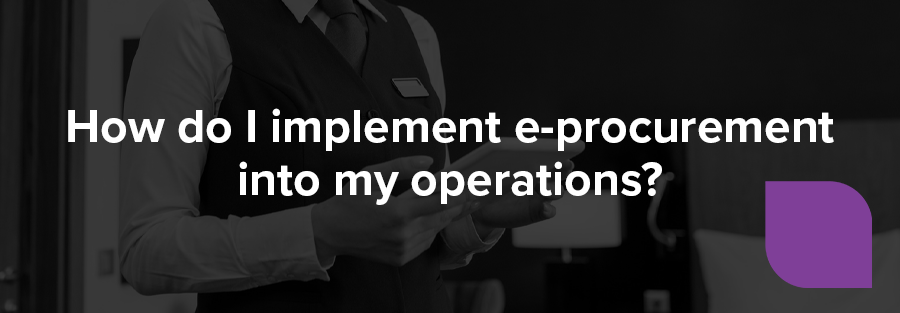In an industry defined by its relentless pace and dynamic demands, the significance of strategic decisions supported by cutting-edge technology cannot be overstated. At the forefront of this digital transformation is e-procurement—a powerful tool that goes beyond mere transactions, redefining how hotels, resorts, casinos, and other hospitality operators manage their procurement processes. In this blog, we’ll dive into the core advantages and processes to equip you with the essential strategies to seamlessly integrate e-procurement into your hospitality operations.
Let’s begin by answering the fundamental question:
What is e-procurement?
E-procurement, short for electronic procurement, refers to the digitization and automation of the procurement process through the use of information technology and online platforms. It encompasses the electronic management of various stages in procurement, from requisitioning and sourcing to purchasing and payment. E-procurement systems are designed to streamline and enhance the efficiency of traditional procurement processes by leveraging digital tools and online platforms.
How does e-procurement work?
E-procurement involves a series of interconnected processes designed to streamline and automate traditional procurement tasks. The exact workflow can vary depending on the specific e-procurement system and the organization’s needs. However, here is a general overview of how e-procurement typically works:
Requisitioning
- User Initiates Request: The procurement process often begins with authorized users creating electronic requisitions for the goods or services they require.
- Approval Workflow: Requisitions are typically subject to an approval workflow, ensuring that requests align with budgetary constraints and organizational policies.
Sourcing and Vendor Selection
- Electronic Vendor Identification: E-procurement systems allow users to identify and select potential vendors electronically, often leveraging databases or online catalogs.
- E-Auctions or e-RFPs: Some systems enable organizations to conduct electronic auctions or requests for proposals (RFPs) to negotiate terms and select suppliers.
Purchase Order (PO) Creation and Approval
- Automated PO Generation: Upon vendor selection, the system generates a purchase order with relevant details such as quantities, specifications, and delivery timelines.
- Approval Workflow: Similar to requisitioning, the PO may go through an approval process to ensure compliance with organizational rules and financial constraints.
Order Fulfillment
- Transmission to Suppliers: Approved purchase orders are electronically transmitted to suppliers.
- Real-time Tracking: Both buyers and suppliers can track the status of orders in real time, allowing for better visibility into the procurement process.
Receipt and Inspection
- Goods or Services Receipt: Upon delivery, the buyer acknowledges receipt electronically within the system.
- Quality Control: Some e-procurement systems integrate with quality control measures, allowing organizations to ensure received goods or services meet specified standards.
Invoice Processing
- Automated Invoicing: Suppliers submit electronic invoices corresponding to the delivered goods or services.
- Three-Way Match: The system compares the invoice against the purchase order and receipt, ensuring consistency and accuracy.
Payment
- Automated Payment Processing: Once the invoice is verified, the e-procurement system facilitates the payment process, often integrating with the organization’s financial systems.
Supplier Relationship Management (SRM)
- Communication and Collaboration: E-procurement systems may include features for ongoing communication and collaboration between buyers and suppliers.
- Performance Monitoring: Organizations can use the system to monitor supplier performance and assess key metrics.
Overall, e-procurement systems offer a centralized and automated approach to procurement, promoting efficiency, accuracy, and transparency throughout the procurement lifecycle.
The implementation of E-Procurement stands as a strategic imperative, offering a myriad of benefits that resonate across the procurement spectrum. From cost-saving measures to heightened transparency, each advantage contributes to the efficiency and effectiveness of organizational procurement processes.
- Cost Savings: E-Procurement enables organizations to negotiate better prices with suppliers, compare quotes efficiently, and identify cost-saving opportunities, resulting in overall reduced procurement expenditures.
- Shorter Purchasing Cycles: The streamlined and automated processes in E-Procurement significantly reduce the time required for tasks such as requisitioning, approval workflows, and order processing, leading to quicker and more agile purchasing cycles.
- Improved Inventory Control: With real-time tracking and visibility into the procurement process, E-Procurement systems enhance inventory management by providing accurate and up-to-date information, minimizing overstocking or stockouts and optimizing resource allocation.
- Transparency: E-Procurement introduces transparency into the procurement lifecycle, allowing stakeholders to track transactions, monitor approvals, and access real-time data, fostering a clear understanding of the procurement process and promoting accountability within the organization.
Embracing E-Procurement is not just a technological upgrade; it’s a commitment to optimizing resources, fostering transparency, and steering procurement into the future. As organizations navigate the dynamic business environment, these benefits collectively underscore the transformative power of E-Procurement in shaping a more agile and cost-effective operational landscape.
Why should I use e-procurement software?
E-procurement software isn’t merely an option in today’s fast-paced hospitality industry; it’s a strategic necessity. Its implementation yields numerous advantages, propelling businesses toward efficiency, cost-effectiveness, and strategic resource allocation. Here are compelling reasons why leveraging e-procurement software is paramount:
- Enhanced Efficiency: By automating tedious manual tasks, e-procurement software significantly reduces processing times. This efficiency translates into swift decision-making, quicker order fulfillment, and optimized workflows.
- Cost Optimization: The ability to negotiate better prices, identify cost-saving opportunities, and streamline processes ultimately leads to substantial cost reductions. Such savings directly impact the bottom line, allowing for greater investment in core business areas.
- Risk Mitigation and Compliance: E-procurement software helps enforce compliance with procurement policies and regulations. It mitigates the risk of errors or non-compliance, ensuring that all transactions adhere to established guidelines.
- Data-Driven Insights: The wealth of data generated by e-procurement systems empowers executives with actionable insights. Analyzing trends, supplier performance, and expenditure patterns allows for informed decision-making and strategic planning.
- Supplier Relationship Management: Building and nurturing strong supplier relationships is vital in the hospitality industry. E-procurement software facilitates transparent communication, collaboration, and performance evaluation, fostering stronger partnerships.
- Scalability and Adaptability: As businesses evolve, so do their needs. E-procurement software offers scalability, adapting to the changing demands of the industry and accommodating organizational growth seamlessly.
The adoption of e-procurement software represents a pivotal step towards operational excellence and competitiveness within the hospitality landscape. It aligns with the industry’s demand for innovation, efficiency, and adaptability, positioning your organization at the forefront of technological advancement.
How do I implement e-procurement into my operations?
Implementing e-procurement into hospitality operations involves several strategic steps to ensure a smooth transition and effective utilization of the technology, including:
Assessment and Planning
- Evaluate Current Processes: Understand existing procurement workflows, pain points, and areas that need improvement.
- Set Goals: Define clear objectives for implementing e-procurement—whether it’s cost reduction, efficiency enhancement, or better supplier relationships.
Engage Stakeholders
- Get Leadership Buy-In: Secure support from high-level executives and decision-makers. Highlight the benefits and align the implementation with overarching business goals.
- Involve End Users: Involve the teams that will use the system in day-to-day operations. Their insights are crucial for successful adoption.
Choose the Right Solution
- Research and Selection: Explore different e-procurement software options. Consider features, scalability, ease of integration, and compatibility with existing systems.
- Vendor Selection: Choose a vendor that understands the hospitality industry’s specific needs and offers customizable solutions. For instance, Source1 could offer tailored solutions for the hospitality segment.
Customization and Integration
- Tailor to Specific Needs: Customize the chosen e-procurement solution to align with the unique requirements of the hospitality business.
- Integration: Ensure seamless integration with existing ERP systems, accounting software, and other relevant tools.
Training and Change Management
- Training Programs: Conduct comprehensive training sessions for employees to familiarize them with the new system. Provide ongoing support to address queries and challenges.
- Change Management: Implement a change management strategy to facilitate a smooth transition and minimize resistance to change.
Implementation
- Phased Rollout: Implement e-procurement gradually across departments or locations to manage the transition effectively.
- Monitor Progress: Continuously monitor the implementation, addressing any issues promptly and ensuring alignment with predefined goals.
Supplier Onboarding and Collaboration
- Communicate with Suppliers: Engage suppliers early in the process, ensuring they understand the new procurement system and its benefits.
- Collaboration: Foster collaboration with suppliers through the new system, ensuring smooth communication and transactions.
Performance Evaluation and Optimization
- Metrics and KPIs: Define key performance indicators (KPIs) to measure the system’s effectiveness.
- Continuous Improvement: Regularly assess performance against set KPIs and make necessary adjustments for optimization.
Sustainment and Support
- Regular Maintenance: Ensure regular updates and maintenance of the e-procurement system to keep it efficient and secure.
- User Support: Provide ongoing support to users, addressing any issues or concerns that arise.
Remember, successful implementation of e-procurement is an iterative process that requires continuous evaluation, adaptation, and commitment from all stakeholders involved.
Partner with Source1: Your E-Procurement Solution
Joining Source1 for e-procurement solutions offers distinct advantages tailored specifically to the hospitality industry’s needs.
Here’s why a hospitality operator should consider partnering with Source1:
Joining Source1 for e-procurement solutions offers hospitality operators a strategic advantage. It’s not just about adopting technology; it’s about partnering with a specialized entity that understands the industry intricacies, offers tailored solutions, and supports businesses in optimizing their procurement processes for sustained success.
E-Procurement Frequently Asked Questions:
Is e-sourcing the same as e-procurement?
While E-Sourcing is a crucial component within e-procurement, focusing specifically on supplier identification, negotiation, and selection, e-procurement extends beyond sourcing to encompass the entire procurement workflow, including sourcing as a pivotal stage. Both are integral parts of a digital procurement strategy but serve different functions within the overall process.
What is an e-procurement tool?
An e-procurement tool is a software or platform designed to digitize and automate various stages of the procurement process within an organization. These tools leverage technology to streamline and manage procurement workflows, making the entire process more efficient, transparent, and cost-effective.















